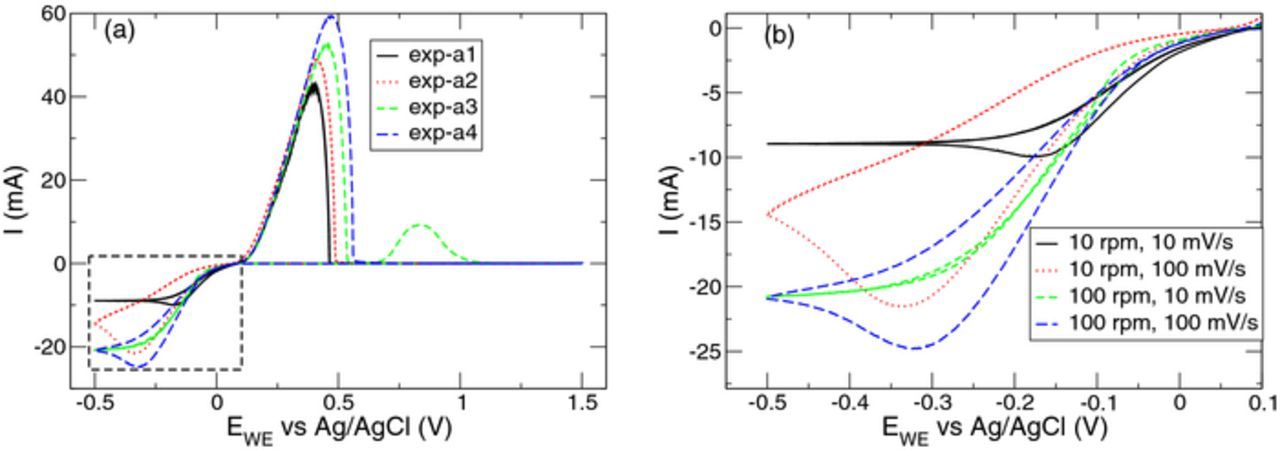In the electrochemical deposition of copper on structured substrates, additives are commonly used as ingredients to refine the copper thin film properties. By means of cyclovoltametric (CV) measurements, we examine the process behavior of the additives PEG (polyethylene glycol) and chloride ions over a wide range of experimental parameters relevant for production-like conditions. In this plating process, additives practically are neither consumed in chemical reactions nor are they incorporated into the growing copper film. To understand the observed complex hysteresis behavior of the deposition current in CV scans, we have recently proposed a model which is able to qualitatively explain this behavior without supposing additive consumption. In the present study, we fit crucial parameters of this model from the experimental data to increase its predictive power. The quantitative agreement of performed simulations of CV scans with the measured scans demonstrates the validity of the proposed copper deposition model. Equipped with the determined parameter set, the model can help to optimize the copper plating process in industrial applications.

In the electrochemical deposition of copper on structured substrates, additives are commonly used as ingredients to refine the copper thin film properties. By means of cyclovoltametric (CV) measurements, we examine the process behavior of the additives PEG (polyethylene glycol) and chloride ions over a wide range of experimental parameters relevant for production-like conditions. In this plating process, additives practically are neither consumed in chemical reactions nor are they incorporated into the growing copper film. To understand the observed complex hysteresis behavior of the deposition current in CV scans, we have recently proposed a model which is able to qualitatively explain this behavior without supposing additive consumption. In the present study, we fit crucial parameters of this model from the experimental data to increase its predictive power. The quantitative agreement of performed simulations of CV scans with the measured scans demonstrates the validity of the proposed copper deposition model. Equipped with the determined parameter set, the model can help to optimize the copper plating process in industrial applications.
